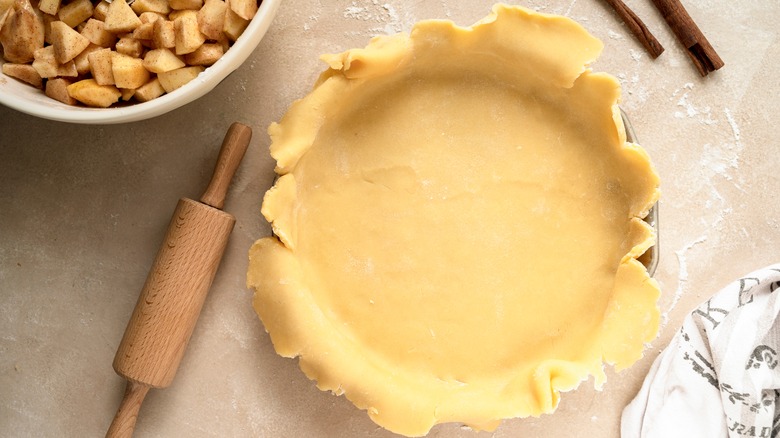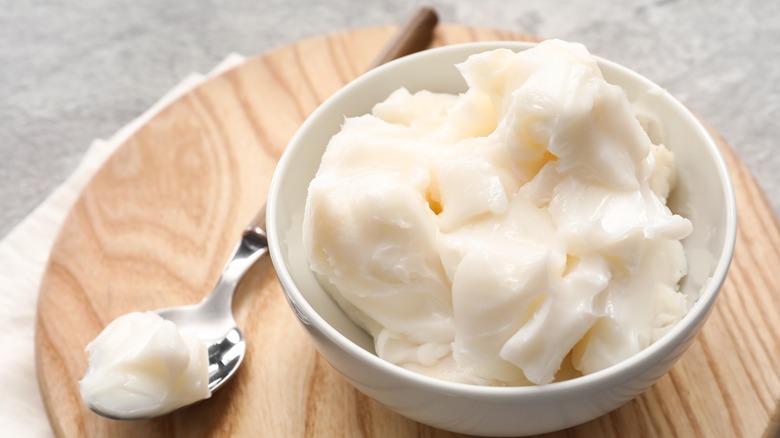How Lard Can Help Your Pie Crust
Pie is one of those desserts that always seems to hit the spot, its buttery crust contrasting with sweet fillings ranging from bright raspberry to classic lemon meringue to irresistible banana pudding. Delicious as dessert or delightful with a cup of morning joe, pie can be a great purchase to make at your local bakery — but it can be even more fun to take on the sometimes-formidable challenge of making a pie from scratch.
Making a flawless pie at home gets easier with practice, but for less experienced bakers, pie-baking mistakes abound, from overworking the dough to forgetting to blind bake it to selecting the wrong type of pie pan. Many of these mistakes come into play when preparing the crust, which ideally should turn out both flaky and crisp, but which in reality often emerges from the oven underbaked, or soggy, or tough (via Food52). If you struggle to create a perfect pie crust, you might want to try cutting some lard into the dough the next time you're whipping up a pie.
Lard can create a super-flaky pie crust
Typically a combination of flour, fat, and just enough ice water to bind the dough without adding too much liquid, pie crust should turn out crispy and flaky, but often turns tough (via Martha Stewart). If you recall stellar pies of your youth baked up by an elderly relative, but none of the desserts you make measure up to them, it might be time to revisit an old-fashioned ingredient — lard.
According to Martha Stewart, many bakers both amateur and professional swear by adding lard — pig fat, a common home ingredient in the past — to their pie crusts (via Southern Kitchen). While lard can impart a strong porky flavor, it's also renowned for the flakiness it brings to pie crust. "The flake you get is unsurpassed," Martha Stewart editorial director Sarah Carey told the outlet. Because lard creates a dough that's easier to work with, the site writes, you're less likely to overwork it, which could be one reason why it typically turns out flakier.
Carey recommends using about 70% butter and 30% lard in pie crust to get a result that's full of butter flavor, but tender from the lard, and pairing the crust with fruit fillings, which can stand up to lard's flavor, as opposed to a delicate custard or meringue. One last tip? Be sure to look for pure rendered leaf lard at the butcher or farmer's market. Processed lard, available in supermarkets, is hydrogenated and loaded with preservatives.

